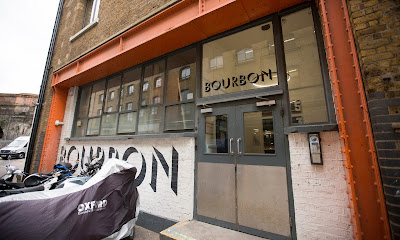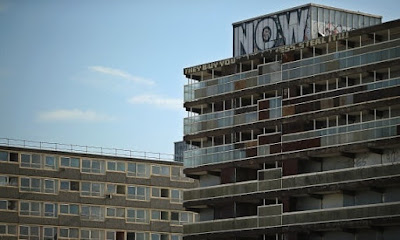Purpose-built block of rental homes, including affordable units and extensive facilities, are fast becoming a hot investment
Aygul Zagidullina is not mad about football, but when she received a newsletter through the door about new rental homes opening next to Wembley Stadium in north London, she and her husband did not need much persuading.
They were the first tenants to move into Quintain’s 7,600-home Wembley Park development, which will include 5,000 purpose-built rental homes. It is the biggest build-to-rent project in the UK, worth £3bn, and when it is finished in 2025-26, about 15,000 people are expected to be living and working on the 85-acre site.
Purpose-built blocks of rental homes are common in other countries such as the US, Germany and France. They are a relatively new phenomenon in Britain, but are fast becoming a hot investment for property developers and City firms such as Legal & General, which are eager to tap into the rising trend for long-term renting. The sector is expanding across England, with 80,855 homes either completed or planned, according to recent official figures.
Angus Dodd, the chief executive of Quintain, which was acquired by US private equity firm Lone Star in 2015, said the company decided to switch from building for sale to building homes for rent because it provided a reliable long-term income stream, in contrast to the ups and downs of the traditional housebuilding cycle. He said government support for and investor interest in build-to-rent had increased.
“It’s a solution to the housing crisis; it could be a big solution,” Dodd said. “It sits alongside housing in all its various forms – modular housing, micro living.”
About 16% of the tenants already living at Wembley Park – a third rental block has just been completed – are key workers such as nurses, teachers, soldiers and police officers.
 |
| The interior of one of the Wembley Park built-to-let flats. Photograph: Quintain |
More than 1,300 homes have been built and a further 3,000 are under construction. The tallest tower will be 26 storeys, but not high enough to look into the stadium. Most of the planned 63 new buildings will have roof gardens. A theatre, office buildings, a primary school, health facilities and a park the size of four football pitches are planned.
Zagidullina and her husband left their privately rented one-bedroom flat in Whitechapel in south-east London, where they paid £800 a month in rent and moved into a £1,500-a-month one-bed at Wembley Park in March 2016. When baby Emily was born nine months ago, they upgraded to a two-bedroom flat with a terrace, with a monthly rent of £2,050.
The rent includes utility bills and ultra-fast broadband. Communal lounge areas adjacent to the entrance come with kitchenettes and Sky TV; there is a residents’ gym and screening room;and a concierge is on hand 24 hours a day to deal with deliveries and emergencies.
Quintain stresses that its rental management company Tipi does not charge controversial letting agent fees or for end-of-tenancy cleaning. The government wants to ban fees to letting agents, which tend to average £223 but can be as high as £800.
Zagidullina described the flats the couple rented previously as “total disasters”. “In Whitechapel, the landlady said her granddaughter was coming to live there and told us ‘at some point you’ll have to leave,’ but we didn’t know when,” she said.
“And our flat in Seven Sisters didn’t feel hygienic. This is the perfect area, the perfect professional landlord who doesn’t have a granddaughter. It’s perfect for a family … You pay a little bit more here, but you pay for a nice lifestyle.”
Quintain admits that many tenants will be “paying a premium for the lifestyle,” but it says 32% of the planned homes at Wembley Park will be affordable. This is a higher proportion than seen at many other London developments, and just below the 35% target set by the city’s mayor, Sadiq Khan - down from his election promise of 50%.
The borough, Brent, is one of London’s poorest but nearly 40% of the affordable Wembley Park homes will be let at a discount to market rents, with the maximum rent set at 65% to 80% of market value. A further 28% will be at an affordable rent and 33% are earmarked for shared ownership and discount market sale.
Brent supports the mayor in seeking a minimum of 35% affordable housing on all new developments. It delivered 30% in the three years to 2015-16, above the 24% London average, according to a council spokeswoman. “We expect to see Quintain construct 3,000 new homes by the end of the year. This can only help to tackle the dire housing situation in London,” she said.
The first big UK build-to-rent scheme to get off the ground was East Village in Stratford, the former Olympic athletes’ quarters which were turned into 3,000 homes by Delancey and Qatari Diar, the property arm of Qatar’s ruling family. Half of them are managed by Get Living, which prides itself on its no-fee, no-security-deposit policy, and three-year tenancies with resident-only break clauses - under which the tenant but not the landlord can terminate their agreement.
The Duke of Westminster’s property firm is also getting in on the game. It intends to build 1,500 rental homes on the site of the former Peek Freans biscuit factoryin Bermondsey in south-east London, where Garibaldi and Bourbon biscuits were invented, but which closed in 1989.
 |
| Grosvenor’s Bermondsey site. Photograph: Graeme Robertson for the Guardian |
If Grosvenor’s £500m masterplan comes to fruition, people will be living on the factory site from 2020-21 when the 12-acre development reopens to the public. Grosvenor, which is owned by 26-year-old Hugh Grosvenor, Britain’s youngest billionaire, intends to file for planning permission in October.
At Wembley Park and the former biscuit factory, the buildings are being designed for renters, with hotel-style lobbies and two-bed flats with en-suite double bedrooms to appeal to sharers and three- and four-bedroom flats for families.
Quintain and Grosvenor will manage the homes long term and plan more build-to-rent projects in London.
Simon Harding-Roots, Grosvenor’s executive director of major projects, said: “Build to rent hasn’t been done at scale for a century in this country by the private sector.”
He believes the private sector needs to step up its game. “Councils can’t provide all of this and why should they?” he said. “The housing crisis is obviously very real. We believe we can make a real difference there.”
Harding-Roots said the Bermondsey flats would cater for a broad range of incomes including key workers earning £25,000-plus a year – “the nurses, teachers and policemen who need to be in London”.
A number of flats will be let at discounted market rent. Discounts are likely to range from 20% off market prices to the “London living rent” with a discount of 50-55% – a new type of “genuinely affordable” housing for middle-income Londoners introduced by Khan. Grosvenor wants to make the discounts flexible, so they can be “dialled up or down” if tenants’ incomes change, so they are not forced to move.
 |
| Building work under way at Grosvenor’s Bermondsey site. Photograph: Graeme Robertson for the Guardian |
Southwark council expects Grosvenor to deliver 35% affordable housing, including flats at social rent. Councillor Mark Williams, the cabinet member for regeneration and new homes, said: “The biscuit factory is an interesting project that supports our priorities including the provision of much-needed new homes, especially for residents on low to middle incomes.”
The yellow-brick site is a long way from Grosvenor’s traditional heartland in Mayfair and Belgravia, two of the capital’s most exclusive neighbourhoods. The firm is moving into more affordable housing projects after being hit by the downturn in the luxury property market.
Frank Turner, 78, who worked at the biscuit factory from 1960 until 1989 and became its chief fire officer, welcomed Grosvenor’s attempt to “breathe life back into the site”.
He said: “The government are saying you should have homes for lower and middle income type people and in the end, with some companies, it doesn’t materialise. If Grosvenor can do it, good luck to them, because that’s what’s needed.”
Up to 11 residential blocks of varying heights are planned with the tallest tower, of 25 storeys, to be built in the centre of the site, which will include a new 600-place secondary school.
The biggest of the biscuit factory buildings, a former warehouse, is to be converted into a five-storey block of flats with a large atrium lined with shops and cafes. The planned public roof garden, with views across London, will hark back to the historic garden where Peek Freans workers used to enjoy a cup of tea - and a biscuit - during break times.
Two new routes under a nearby railway line will link the development with the Blue Street Market, which has dwindled to a handful of traders. When the Guardian visited, only Russell Dryden, a fishmonger, was plying his trade in the square. He expressed hope that the Grosvenor development, which is expected to create 50 new business spaces in the Victorian railway arches and 1,300 permanent jobs, would revive the market.


No comments:
Post a Comment